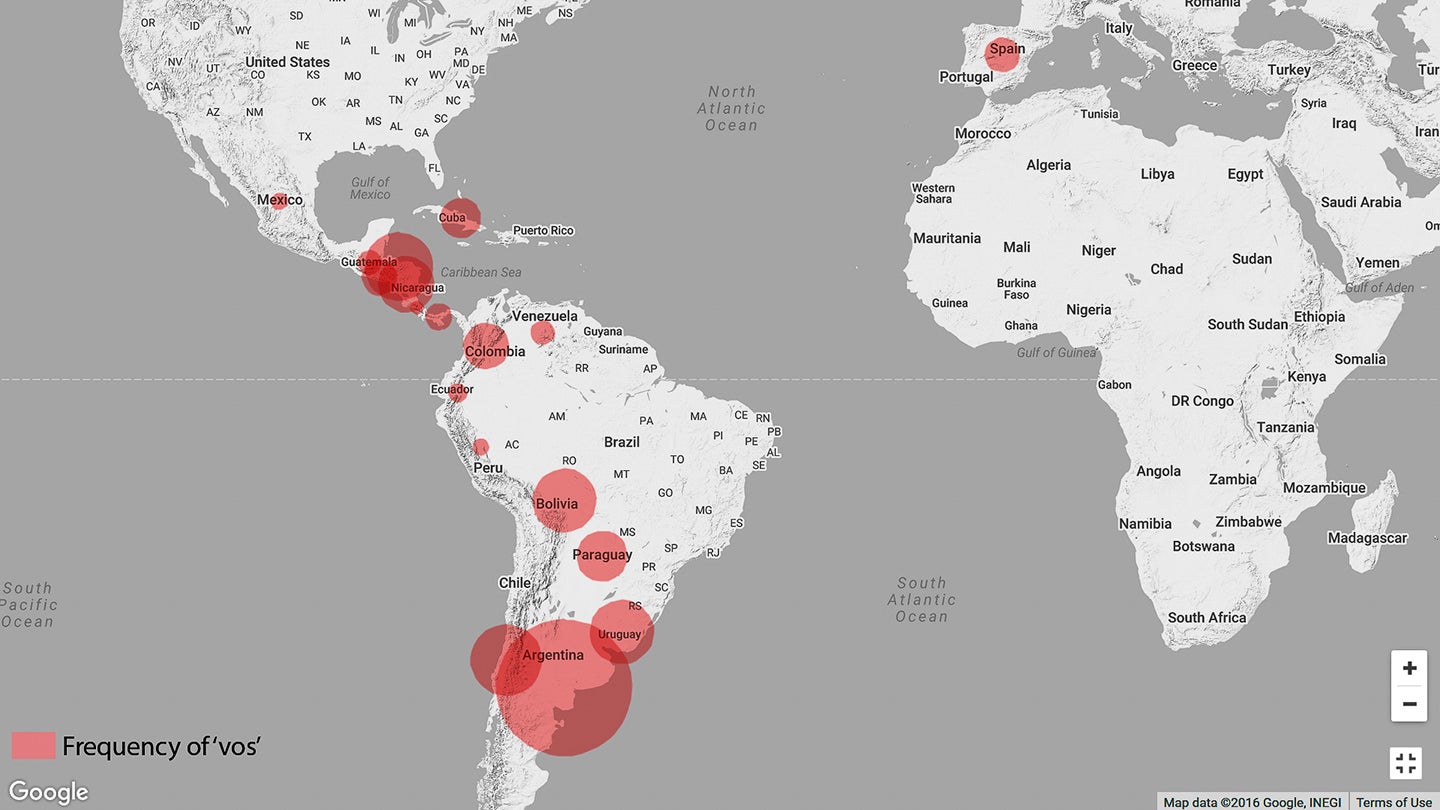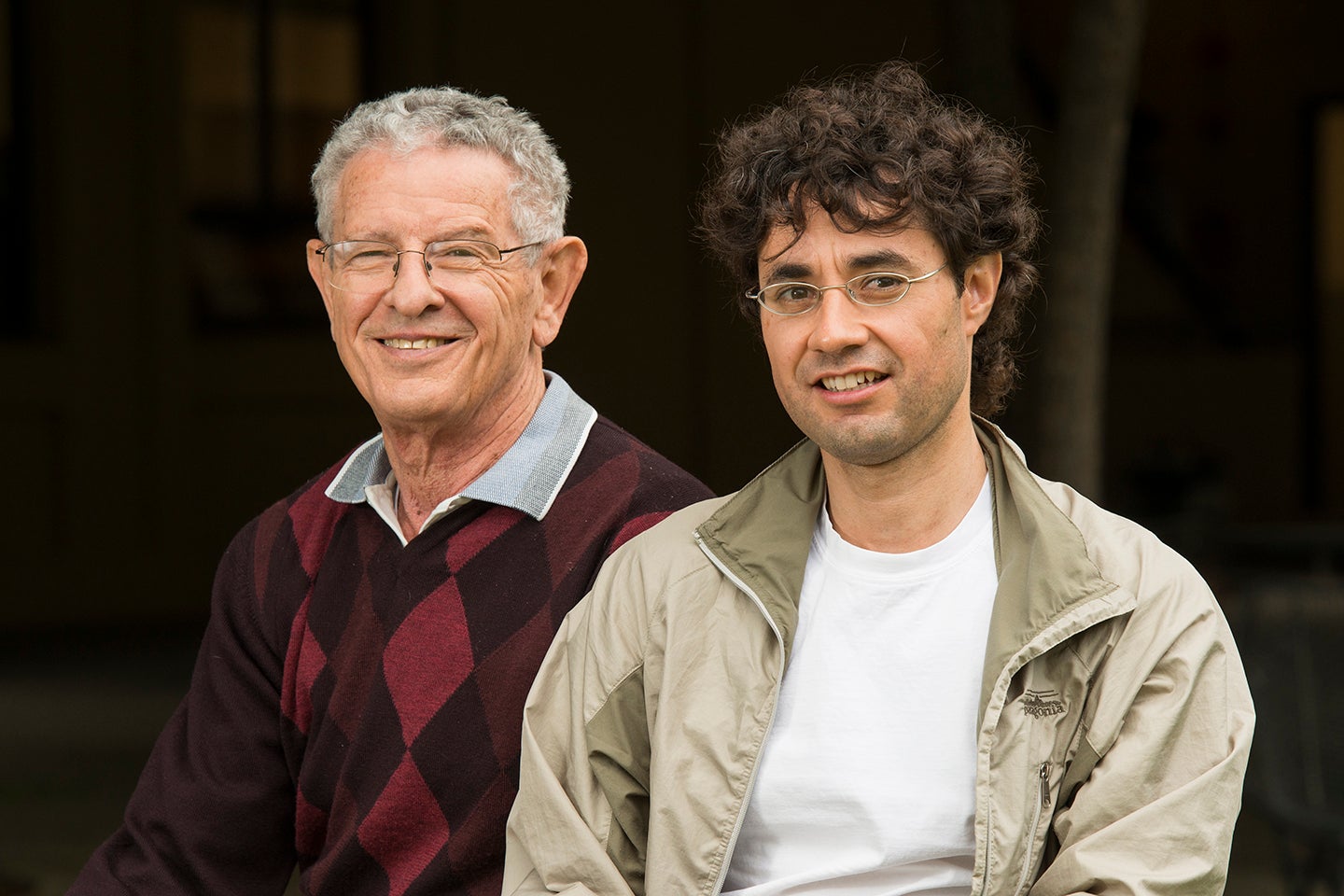How has the Spanish language evolved in the hundreds of years it has been spoken on multiple continents?

Map shows the frequency of the use of the Spanish pronoun vos as opposed to tú in Latin America. (Image credit: Cuauhtémoc García-García)
To answer the question, Cuauhtémoc García-García, a graduate student in Iberian and Latin American cultures, analyzed 900 years’ worth of texts in over a quarter of a million volumes.
“I wanted to study language evolution through data found in written work to add historical depth to how, where and when languages changed,” he said. “My new data show that Spanish on the Iberian Peninsula was much more resistant to change over time when compared to Spanish in the Americas, where – since colonization – Spanish from Spain has come into contact with local, indigenous and hybrid influences.”
That process, he noted, has led to a Spanish that has progressively changed ever since the language first arrived in the Americas. The changes, however, are not uniform across the Spanish-speaking Americas, and instead he found that the “hybridization” and evolution of language varied from place to place.
Drawing on his past work on changes in Brazilian Portuguese, García-García also noted intriguing differences between the two languages.
“In Brazil, there was a sudden shift in written language that coincided with the country gaining independence from Portugal in 1822 and correlating with increased local autonomy in printing and education,” said García-García, who is a member of the Digital Humanities Focal Group.
In Spanish America, however, rapid transformation of this sort was less common, as the colonies typically had more liberties regarding printing presses and educational institutions. Unlike Portugal, Spain introduced the printing press and universities to its colonies in the Americas in the 16th century, meaning that Spanish was open to local influences and piecemeal evolution over a more gradual period.
Different places, different pronouns
In his study, García-García examined the changing use of pronouns in written works. One example aimed to quantify the frequency of the Spanish pronoun vos as compared with tú, both pronouns meaning “you.”
Their usage varies across time and space. In Argentina, for example, vos is used almost exclusively as the second-person singular pronoun (“you”), as it is in Uruguay, Paraguay, Costa Rica and Nicaragua, and to a lesser extent in other Spanish-speaking countries.
García-García found a different story in Chile. Vos was common until the mid-19th century, when it ceded ground to tú after a campaign led by the Venezuelan intellectual and educator Andrés Bello, who sought to eradicate it from the educational system in his adopted home.
Bello published Castilian Grammar Intended for the Use by Americans in 1847, laying down the rules and institutions intended for Spanish-speaking countries in the Americas. These rules were strongly influenced by colonizers and advocated use of the language in accordance with the Madrid-based Spanish Royal Academy, of which Bello became a member in 1861.
Bello’s norms for language and usage, however, were not embraced all over the Americas.
“In regions such as Mexico, Venezuela, Peru, Bolivia and the southwestern U.S., tú gained popularity and vos did not evolve as part of written language. In fact, it is very rarely used today,” said García-García.
García-García found in the available corpus that the second-person plural pronoun – vosotros – regularly appears in texts written in Iberian Spanish. But this same pronoun has largely fallen into disuse in modern Latin America.
As an extension to his earlier study, García-García wanted to contrast how the evolution of language in Brazil and Portugal compares with that of Iberian and Latin American Spanish.
“The digital corpus in Spanish is currently about four times larger than in Portuguese, meaning there is a lot more data to work with,” he said. While the large size of the Spanish corpus means there is a lot of “noise” in the data that needs to be cleaned and sorted, it yields a shaper picture of language evolution across distinct geographical areas.

Graduate student Cuauhtémoc García-García (right) adapted statistical modeling technologies created by biology Professor Marcus Feldman to trace language rather than biological evolution. (Image credit: L.A. Cicero)
Digital discoveries
García-García, working with Iberian and Latin American cultures Professor Joan Ramon Resina and biology Professor Marc Feldman, also collaborated with Green Library and Google to secure a Spanish language corpus that runs from the 13th century to 2014. Feldman, an expert in evolutionary biology, created statistical modeling technologies that García-García adapted. Rather than simulate biological evolution, he traced the development of language.
“I devised various computer programs and algorithms to analyze this large digital corpus of books to trace language evolution,” García-García said. “After plotting hundreds of thousands of points on a series of graphs and analyzing the data that I mined, I decided that an accessible, interactive map would be the most efficient way to understand and communicate how this evolution took place.”
Green Library, and curators Glen Worthey, Everardo Rodríguez and Adán Griego, agreed with him. The project website, slated to launch during the 2016-17 academic year, will bring the data to life and allow users to scroll though history on an interactive map to see when and how linguistic evolution took place.
Ultimately, García-García is fascinated by how language evolves and how it shapes and mirrors social and historical changes.
“Language is always in movement and development, and there is no fixed way that perseveres over longer historical timeframes. My research has started to open that up in the digital realm for Portuguese and now Spanish, and hopefully it is a model that can be employed in other languages.”
Media Contacts
Chris Kark, director of humanities communication: (650) 724-8156, ckark@stanford.edu